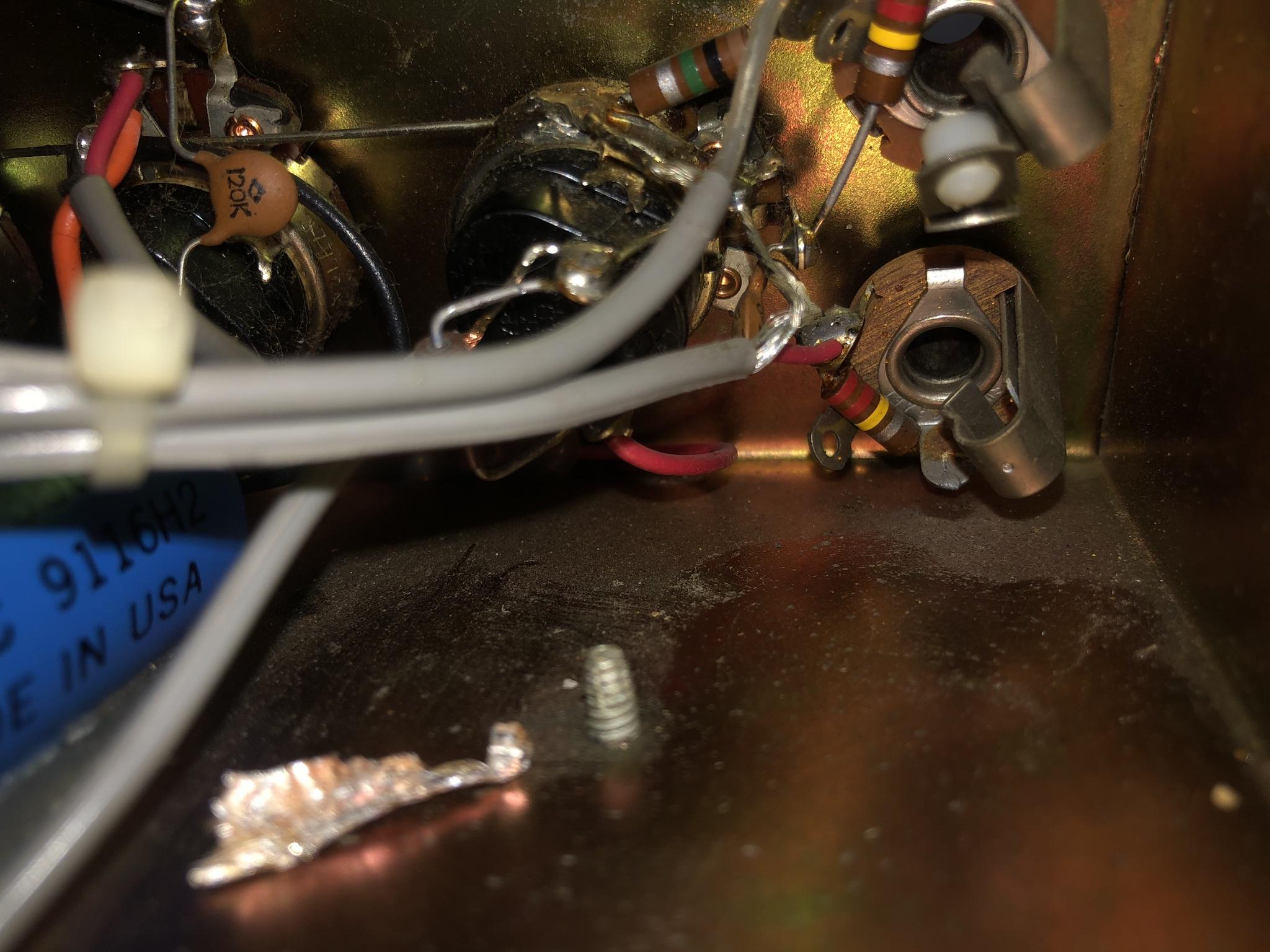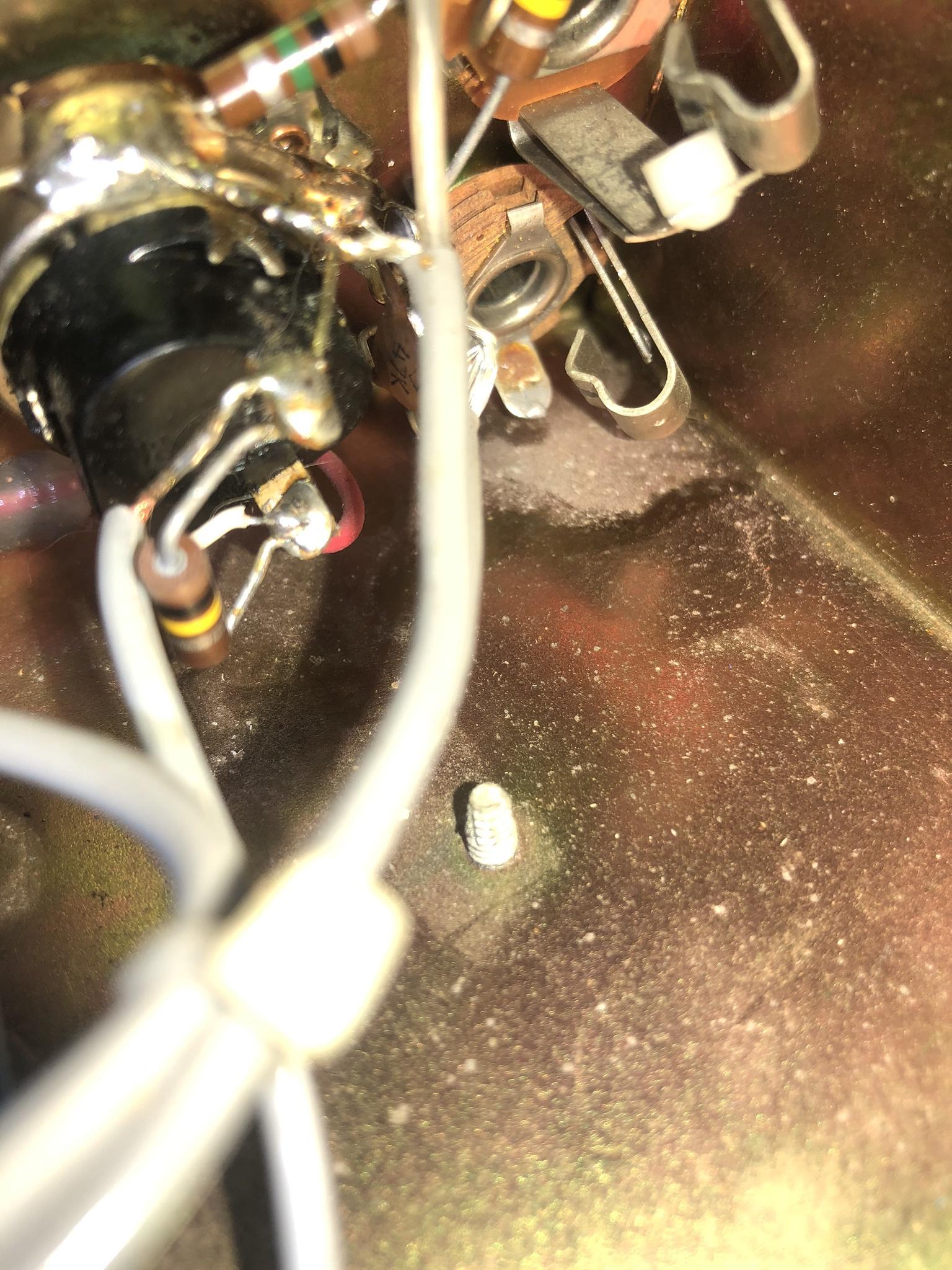Yes the EQ is the GE-7. I knew it was far from the best but it was pretty cheap used available locally so I thought I'd give it a try and see if I like the results of tweaking the tone with an EQ in the FX loop. While searching before buying the GE-7 I did see the Mesa EQ pedal and liked the idea a lot, but it is like 380$ CAD here so I thought I'd try the cheap Boss first to get an idea. I like the effect it has but it always seems like when I want to tweak something, it does not cover the frequencies I would like to tweak. Maybe I'm just not used to what is tweakable or not with an EQ. For instance the presence and bright pull knob both seems to affect frequencies far above what the Boss EQ does. Anyway I'm off topic here
About the brightness at very low fx pot setting, I can only see it being because of the 22-35 cap, or maybe some special dynamics of the tubes with very low signal? It is also worth mentioning when I put the FX pot completely minimum position, I still get a very thin signal. Basically the extreme point of the bright sound I achieve by this method. Then I roll the pot up very slowly until there is suddenly just a bit of bass and other frequencies and a tiny bit mode volume. Then I stop there, crank the master at like 2 instead of being below 1 (or boost the FX signal with the EQ to bring back to normal volume instead of cranking the master).
I have an Ernie Ball volume pedal but it is the 250k model made for passive pickups. Do you think it will be a problem when used in the loop? If I do as you suggest though (master up, and FX send up, lowering the signal with the pedal) I suspect I will not recreate the sound I am after, since it is the opposite of what I'm currently doing, but it will be an interesting test for sure.
Thanks for bringing the ideas and feeding the discussion! Seems like I keep learning stuff every time you guys reply hahaha
Fred
Yeah I like the GE-7, but found it works best before distortion if you're boosting anything. A parametric EQ might be worth trying as well, though there are fewer options for those.
That's interesting. The MK 1 with the factory mod behaves in a very similar way - fairly bright and thin with the front master at low settings, but probably due to the bright cap. I know my IIA doesn't have one and is a bit more consistent at lower levels. I imagine there are a few variations of this mod - probably depending on the amp it's being installed into.
Yeah that's fine. The JHS volume box (which is specifically for this purpose) uses a 100k if I recall.
I have just ordered replacement cap for the preamp board 60uF 350V cap, along with resistors to put 100k and 1.5k instead of the 82k and diodes.
In order to reach the minimum amount for the order I also added a second cap, higher value (100uF 350V) thinking I could maybe use it as an alternative instead of the 60uF. Given its position in the schematic, is it to smooth and stabilize the voltage supply for stages 1 and 2 ? If that is the case, increasing the value like that (60uF to 100uF) be ok and just provide a more solid voltage? Could that provide a tighter sound somehow?
@James , you said yours came with a 40uF while mine is 60uF, do you remember yours manufacturing date or serial number? Maybe the tendency of Mesa to progressively build tighter gain amps through the years (until they did the IIC+), if yours was older than mine it could match that "story". But I'm just speculating so feel free to correct me if I'm wrong on the purpose of the cap or if it's a very bad idea to increase that value further.
@mark1406 You said this cap was to stop oscillation, and possibly add decoupling to the power supply. I guess that means filtering out fluctuations that could occur on the supply. What are your thoughts on increasing its value, would it just result in better filtering, more stable supply?
Regards,
Fred
It's dated 9-77. Based on the ones I've owned/tried, I'd say that's correct. For what it's worth, I've seen one amp that Mesa serviced and it had the 30uf cap in that position.
I believe mine has 100uf mains caps too. I can't remember if that was the original value or if it was 60uf like the earlier amps. I'll have to see if I have any pictures of when it was stock.











